written by Laurie Tom
There’s a lot of good stuff this summer, so much that I’m glad my plate is currently clean of other series because I may end up watching a bit more than usual.
91 Days
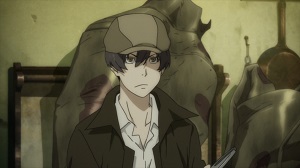
Why I Watched It: Original mafia TV series set in the Prohibition era? Sign me up. The story is to take place over 91 days during which the protagonist returns to his old stomping grounds to exact revenge for the murder of his family.
What I Thought: I hadn’t expected that Angelo was only a kid when his parents and brother are killed in a change of power in the mafia family his father belonged to, and he grows into a teenager under the new name Avilo Bruno to hide his real identity. Despite his age, Angelo is fairly hard bitten and we don’t see the entirety of his plan in the first episode, but it looks like his goal is to infiltrate the Vanetti Family, because it will easier to exact revenge when his target thinks he’s a trusted comrade. What we do get is some bootlegging, a violent encounter with the powerful Ocro Family, which leads into Angelo and his friend Corteo meeting up with Nero Vanetti, who was one of the men responsible for killing Angelo’s family.
Verdict: I’ll be watching! Though the setting looks more European than East Coast, the show strikes the period mood it goes for with its reserved color palette and brutal gang wars. Also worth mentioning is that Corteo is a PoC, which is rare for a mafia drama. Angelo probably isn’t a protagonist people are going to relate to, but the guy’s got guts, so he’ll probably be fun to watch.
Where to find stream: Crunchyroll
Berserk
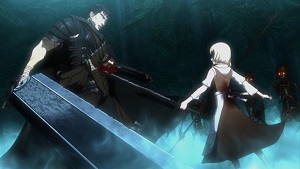
Why I Watched It: Berserk is not my normal cup of tea. I dislike grimdark fantasy in general, and the series is known to have a way with mentally and physically breaking its characters. But I got to know the protagonist, Guts, before I knew all that, while watching my brother play one of the Berserk video games, so I’m more inclined to give this a shot.
What I Thought: Though the anime is not starting at the beginning of the manga, I feel like the opening episode establishes all that really needs to be known about Guts before jumping in. He’s cursed, some bad mojo went down in his past, and it’s a really bad idea for anyone decent to hang around him because they’re probably going to get killed. The animation is a little janky with the obviously computer animated enemies versus the 2D appearing Guts, but considering the world itself doesn’t seem quite right, that’s probably okay. A group of bandits get eaten by forest demons before they even get close to getting revenge on Guts, so this is clearly a messed up place to be. Guts himself is a little ridiculous when it comes to combat ability, there’s even a narrator explaining how his sword is too big to realistically be considered a weapon, but the character’s no nonsense approach to everything he does sells it.
Verdict: If this was another season, I’d be watching, but there’s just too much this time around. Berserk has been one of the classics I’ve heard about for years, and this is not its first time being animated, but this is the first time this particular story arc has been.
Where to find stream: Crunchyroll
D. Gray-man Hallow
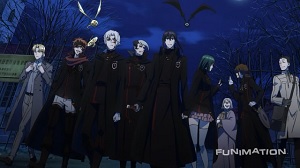
Why I Watched It: D. Gray-man was one of last long-running shounen series I watched, because I liked the characters and the macabre worldbuilding. If the bereaved want to bring a loved one back to life, it’s entirely possible, though the price is incredibly high. The resurrected become akuma, monsters devoted to the service of the malevolent Millennium Earl. The original series ran for 103 episodes in 2006-2008, but only half have made it to the US. In the wake of Hallow the second half has been licensed since Hallow continues the manga storyline from where the earlier series left off.
What I Thought: Can you catch up? Is it worth it? It’s possible to get a feel for how the story has progressed if one is familiar with the earlier licensed portion of the anime, but even with that grounding, it’s obvious that a lot of time has passed and some serious business has gone down. The exorcists of the Black Order look older, more battle worn, and protagonist Allen Walker is now host to the memories of someone who could be considered one of the bad guys. I wouldn’t recommend jumping in without at least some familiarity with the series, otherwise a lot of what happens in this first episode will have no weight, and there’s a lot that clearly does.
Verdict: I’m going to pass. Though I like seeing all the familiar faces again, it’s clear that I missed a huge turning point in the battle with the Earl which was probably the climax of the previous series. Now that I know the rest of the original has been licensed, I’ll wait for that to come out and watch Hallow afterwards.
Where to find stream: Funimation
Danganronpa 3: The End of Hope’s Peak Academy – Future
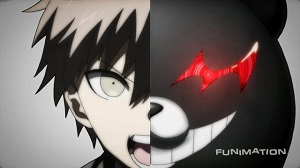
Why I Watched It: This is the conclusion to the storyline started by the Danganronpa video games and not actually based on a game itself. Because of gameplay constraints (which players will understand) it would have been difficult to provide a proper send-off to the Danganronpa 1 cast without stretching believability. This anime is supposed to do that and conclude the Hope’s Peak Academy storyline.
What I Thought: I was a little concerned by how large the cast is jumping in, but it’s aided by the fact there are a number of returning characters who survived the first killing game. People who have only watched the first anime and not played Danganronpa 2 are guaranteed to be lost though, as the second game was never animated and the two minute recap doesn’t even begin to cover what happened, but fans of both games can comfortably jump in. Oddly enough, two of the characters who ought to be returning, Byakuya and Toko, are nowhere to be seen, but hopefully they’ll have cameos later. The first episode is well paced, getting Makoto Naegi accused of treason for his actions in Danganronpa 2 as well as bringing back series villain Monokuma, who starts things off with a bang. Nothing like a murder to begin the next killing game!
Verdict: I’ll be watching. Danganronpa has a reputation for being dark with a black sense of humor, and it’s all there. Even the opening credits are fairly messed up, depicting the potentially gruesome deaths for each cast member, so the audience has no idea who will survive (though I think Makoto will make it). The writer for the Danganronpa games laid out the story for the anime-only conclusion so this is as canon as it gets.
Where to find stream: Funimation
Danganronpa 3: The End of Hope’s Peak Academy – Despair

Why I Watched It: Though it’s airing in the same season, Despair is a separate show with its own opening/ending credits sequence from Danganronpa 3: The End of Hope’s Peak Academy – Future. This is a prequel to Danganronpa 2 and follows the story of the DR2 cast leading up the start of the game.
What I Thought: Being animated at the same time as the Future arc there is some crossover with the new characters, which I’m fine with since it’s helping to implant them in my memories, but unlike Future which begins and remains dark, the Despair arc’s first episode is mostly comedic and focuses on getting to know the students of Class 77 rather than any sort of plot. Given what’s to come (the arc is named Despair for a reason), I’m pretty sure that’s intentional since the mood is all downhill from here. Though it’s not possible to be spoiled from the first episode, if the story goes all or even most of the way to the start of Danganronpa 2 it will spoil one of the end game twists for anyone who hasn’t played it.
Verdict: I’ll probably be watching, but mostly because I’ll already be watching Future. Since this is a prequel I already know where they’re going to end up, it’s more of a question of how they get there and whether or not I want to watch something that’s likely to be a horrible downer. It’s worth noting that in Japan the Future arc airs before Despair and it’s possible Despair will spoil things in the former even though they take place in different time periods.
Where to find stream: Funimation
Orange
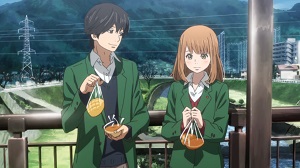
Why I Watched It: I liked the premise, that a high school girl receives a mysterious letter from herself ten years in the future, telling her that a new student is coming to her school and that she should watch him. The manga has been on my periphery for a while, so I’m looking forward to seeing what people like about it so much.
What I Thought: This series is likely to become a tearjerker due to the kicker at the end of the first episode when sixteen year old Naho Takamiya gets to the end of the letter she receives from her future self. Though there are a couple scenes in the future, most of the story takes place in the past with teenage Naho gradually reading through the letter and parsing the things her future self tells herself to do (or not do) in order to avoid her biggest regrets. Meanwhile, Naho and her friends adopt the transfer student, Kakeru, surprisingly fast, but it gets everyone introduced quickly and none of them feel like stock characters. The sequence of the six of them screwing around in the park was a lot of fun. Though there is a science fiction premise in the existence of the letter, the story itself plays more like a high school drama.
Verdict: I’ll be watching! The ending definitely sets up the stakes and will make the days to come more meaningful to Naho, but I wonder if things could potentially backfire from what her future self intended.
Where to find stream: Crunchyroll
ReLIFE
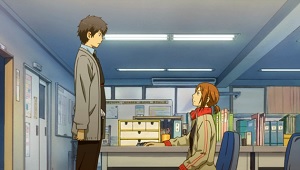
Why I Watched It: I love the manga, where unemployed 27-year-old Arata Kaizaki takes part in an experiment to relive a year of life as a high schooler and see if he can come out of the experience with the skills necessary to fix his life as an adult (primarily, getting a full time job). The manga is great at juxtaposing the physically teenage Arata’s behavior with his chronological age as he has the perspective from having been an adult for several years, while also being completely terrible at schoolwork because he’s forgotten everything.
What I Thought: I think I laughed harder at the manga, but it translated surprisingly well to the screen considering it’s mostly a series of short scenes about Arata getting into awkward situations. This time there’s a bonus for those with some understanding of spoken Japanese since fish-out-of-water Arata speaks like an adult among strangers rather than a student among classmates. While the premise is similar to Orange along the lines of re-doing high school for fewer regrets, this is more of a comedic take with golden moments like Arata unwittingly bringing cigarettes to class without thinking about why that would be a bad idea.
Verdict: I’d like to watch, but given how crowded this season is, I’m not sure. I would highly recommend it for those who haven’t already read the manga, but the humor doesn’t seem to be quite as effective a second time around so it’s a little lower on my priority list. The episodes for this one are being posted extremely quickly rather than the usual once a week schedule, so there will likely be a full season’s worth by the time this article is posted.
Where to find stream: Crunchyroll
Sweetness and Lightning
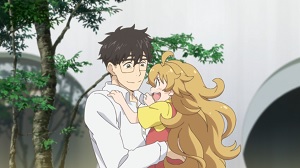
Why I Watched It: Slice of life isn’t entirely my thing, but I figured I’d give it a shot since this series involves a single dad raising a young daughter, and having been raised by a single dad this piques my curiosity. Interestingly, the original manga ran in a magazine for young adult men.
What I Thought: It’s definitely sweet, as Tsumugi is adorable and unusually compliant for a kindergartner. Her father Kohei is also extremely patient for a recent widower. Their family life at the start of the story feels a little too romanticized for being only six months after their loss, but that said, Kohei’s struggle to properly care, and especially cook, for his daughter rings true. We see him pass on hanging out with coworkers after work because he needs to go home to her, and him picking up prepackaged meals because he can’t cook. There’s no doubt he cares about her, but he’s not really prepared to be a single father. The only beat that feels off is the introduction of one of his students who looks to become a regular character, because I have trouble with a high school girl hanging out with her teacher outside of school.
Verdict: I’ll probably pass on account of this not being my thing, but it’s delightful to see a series squarely aimed at adults and what it’s like being a single dad of a very young child.
Where to find stream: Crunchyroll

Laurie Tom is a fantasy and science fiction writer based in southern California. Since she was a kid she has considered books, video games, and anime in roughly equal portions to be her primary source of entertainment. Laurie is a previous grand prize winner of Writers of the Future and since then her work has been published in Galaxy’s Edge, Strange Horizons, and the Year’s Best YA Speculative Fiction.




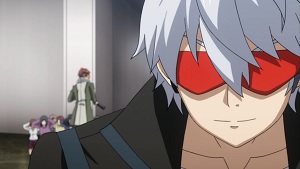
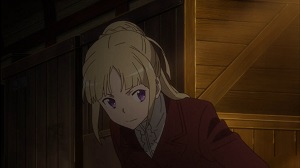
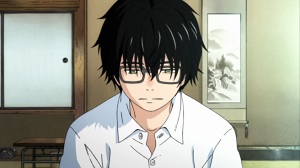
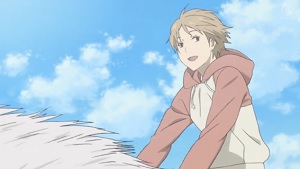
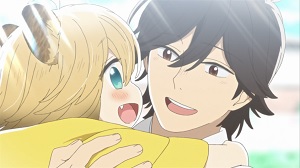
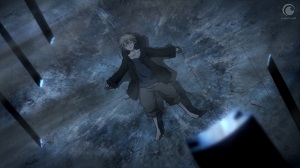
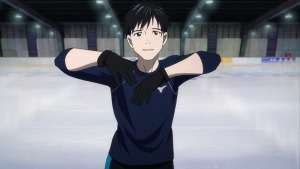
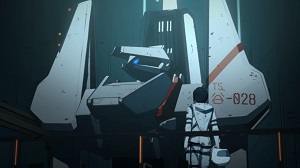
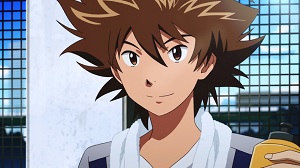 I did not grow up with Digimon in that I had just graduated college when it started airing, but it was one of the last series I watched as a Saturday morning cartoon. People who haven’t seen it tend to dismiss it as a Pokemon knock-off, for featuring young children with monster buddies, but it did something that Pokemon did not. It allowed its protagonists to mature and grow up.
I did not grow up with Digimon in that I had just graduated college when it started airing, but it was one of the last series I watched as a Saturday morning cartoon. People who haven’t seen it tend to dismiss it as a Pokemon knock-off, for featuring young children with monster buddies, but it did something that Pokemon did not. It allowed its protagonists to mature and grow up.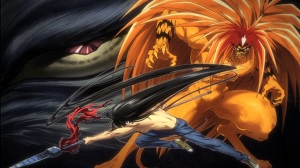 When I first started watching anime I wasn’t too picky, because there wasn’t much available, so I watched a lot of genres that I wouldn’t anymore.
When I first started watching anime I wasn’t too picky, because there wasn’t much available, so I watched a lot of genres that I wouldn’t anymore.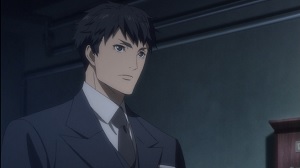
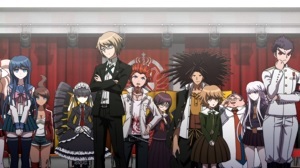 Danganronpa: Trigger Happy Havoc is probably one of the best mystery games I’ve played, and if you aren’t put off by a lot of reading, I highly recommend picking up a copy on Steam or Playstation Vita before watching the anime, since it will spoil everything in an otherwise plot-heavy game. For non-gamers, the 2013 anime offers a more condensed version of the story and it’s a surprisingly good adaptation.
Danganronpa: Trigger Happy Havoc is probably one of the best mystery games I’ve played, and if you aren’t put off by a lot of reading, I highly recommend picking up a copy on Steam or Playstation Vita before watching the anime, since it will spoil everything in an otherwise plot-heavy game. For non-gamers, the 2013 anime offers a more condensed version of the story and it’s a surprisingly good adaptation.





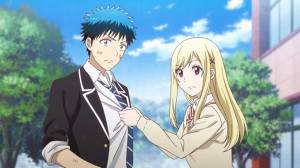 I didn’t watch Yamada-kun and the Seven Witches during its initial run in Spring 2015 because I saw the title and key art, and it looked like a harem show to me. One guy, seven witches. It’s not my personal fantasy.
I didn’t watch Yamada-kun and the Seven Witches during its initial run in Spring 2015 because I saw the title and key art, and it looked like a harem show to me. One guy, seven witches. It’s not my personal fantasy.